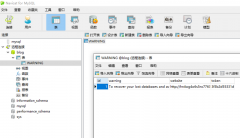Spring强大事务兼容数据库多种组合解决业务需求
时间:2023-12-07作为一个开源的Java应用程序框架,Spring框架具有强大的事务支持,可以与各种数据库进行组合解决企业级应用程序的业务需求。以下是Spring强大事务兼容数据库多种组合解决业务需求的攻略:
- 整合Spring事务管理机制
在Spring框架中,事务管理是通过对javax.transaction.UserTransaction和javax.transaction.TransactionManager的支持来实现的。这使得你可以在Spring中使用各种事务管理器(例如Atomikos或Bitronix)来管理数据库事务。Spring事务管理机制还提供了对JTA事务和本地事务的支持,以便你可以在需要的时候(例如分布式环境中)轻松地切换事务管理器。
以下是整合Spring事务管理机制的步骤:
1.1 在应用程序的Spring配置文件中,增加事务管理器声明
<bean id="transactionManager" class="org.springframework.jdbc.datasource.DataSourceTransactionManager">
<property name="dataSource" ref="dataSource"/>
</bean>
其中,dataSource是通过Spring声明的数据源。
1.2 在需要进行事务管理的类或方法上,使用Spring提供的事务注解,标记需要进行事务管理的方法
@Service
public class UserServiceImpl implements UserService {
@Autowired
private UserDao userDao;
@Override
@Transactional
public void add(User user) {
userDao.add(user);
}
@Override
@Transactional
public void update(User user) {
userDao.update(user);
}
@Override
public User get(Integer userId) {
return userDao.get(userId);
}
//省略其他未标记的方法
}
通过将@Transactional注解标记在需要进行事务管理的方法上,Spring框架就会在执行该方法的过程中,使用刚才声明的事务管理器开启、提交或回滚数据库事务。
- 兼容多种数据库
Spring框架通过抽象出数据访问层(Data Access Layer,DAL),来提供跨多种数据库的持久性解决方案。Spring中的DAL层是通过定义最小量的接口来实现的,因此它们可以很轻松地被多个数据库驱动器实现。Spring的JDBC支持为所有JDBC驱动程序提供了一致的接口,使得在不同数据库之间切换变得相对轻松。以下是使用Spring兼容多种数据库的示例:
2.1 首先,在程序中引入需要的数据库驱动程序以及Spring通过JDBC提供的依赖包,如下:
<dependencies>
<!-- Oracle驱动 -->
<dependency>
<groupId>com.oracle</groupId>
<artifactId>ojdbc6</artifactId>
<version>11.2.0.4</version>
</dependency>
<!-- MySQL驱动 -->
<dependency>
<groupId>mysql</groupId>
<artifactId>mysql-connector-java</artifactId>
<version>5.1.47</version>
</dependency>
<!-- Spring JDBC依赖 -->
<dependency>
<groupId>org.springframework</groupId>
<artifactId>spring-jdbc</artifactId>
<version>5.2.2.RELEASE</version>
</dependency>
</dependencies>
2.2 声明数据源,以及使用Spring JDBC提供的JdbcTemplate类执行数据库操作
<bean id="dataSource" class="org.springframework.jdbc.datasource.DriverManagerDataSource">
<property name="url" value="jdbc:mysql://localhost:3306/mydb"/>
<property name="username" value="root"/>
<property name="password" value="password"/>
</bean>
<bean id="jdbcTemplate" class="org.springframework.jdbc.core.JdbcTemplate">
<property name="dataSource" ref="dataSource"/>
</bean>
在上述示例中,使用的是MySQL数据库,通过声明dataSource实例,将JDBC URL、用户名和密码设置为属性;在声明jdbcTemplate实例时,设置数据源为上面声明的dataSource实例。使用Spring提供的JdbcTemplate对象,可以使用简化的API在Java代码中执行SQL语句,而不必自己管理连接等详细信息。
以上就是Spring强大事务兼容数据库多种组合解决业务需求的完整攻略,希望对你有帮助。
 记录一次mysql数据库被黑删库遭比特币勒索的教训起因是想用服务器上的一个数据库访问其他数据库的权限,就直接按照网上教程改了mysql库里的user表的权限,可能是哪里权限修改问题,也没太在意,到了第二天发现网站登录不
记录一次mysql数据库被黑删库遭比特币勒索的教训起因是想用服务器上的一个数据库访问其他数据库的权限,就直接按照网上教程改了mysql库里的user表的权限,可能是哪里权限修改问题,也没太在意,到了第二天发现网站登录不 MySQL提示某表is marked as crashed and last (automatic)repair fai错误分析: 此错误为表损坏,修复即可。一般原因为服务器突然断电,而有程序还在往表里写数据。或者表的数据很大。避免浪费时间去修表。注意服务器操作时停掉数据库。另外
MySQL提示某表is marked as crashed and last (automatic)repair fai错误分析: 此错误为表损坏,修复即可。一般原因为服务器突然断电,而有程序还在往表里写数据。或者表的数据很大。避免浪费时间去修表。注意服务器操作时停掉数据库。另外